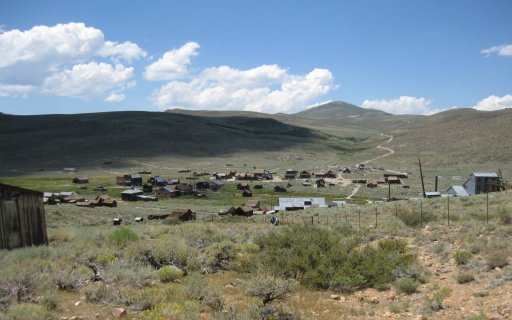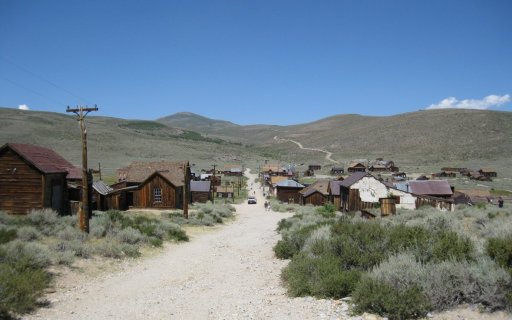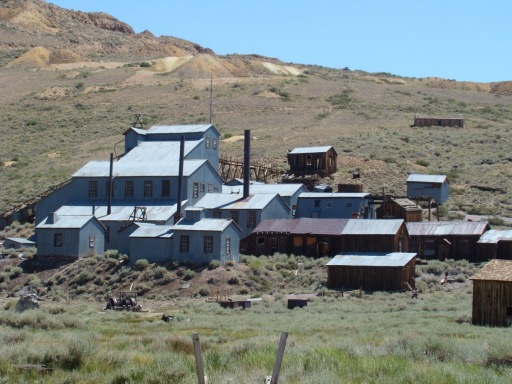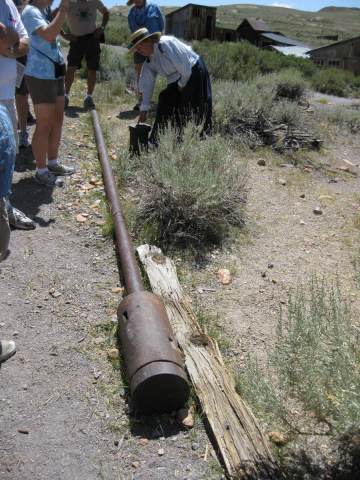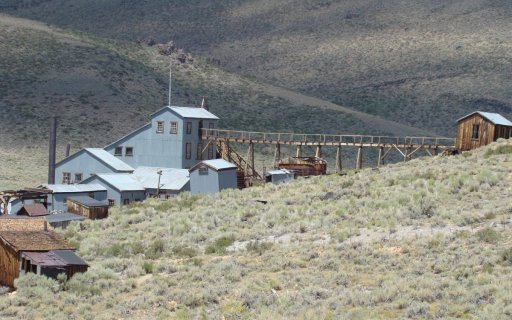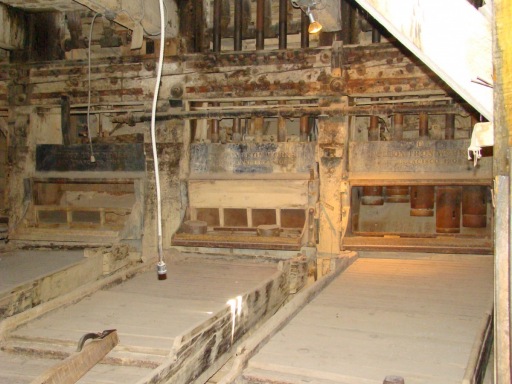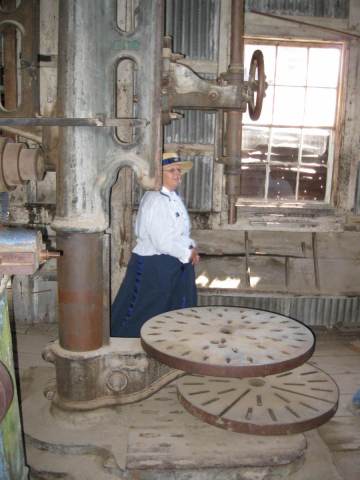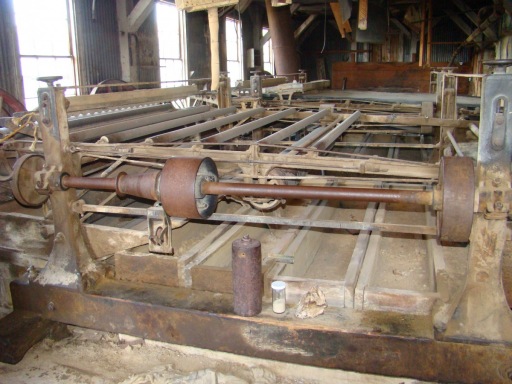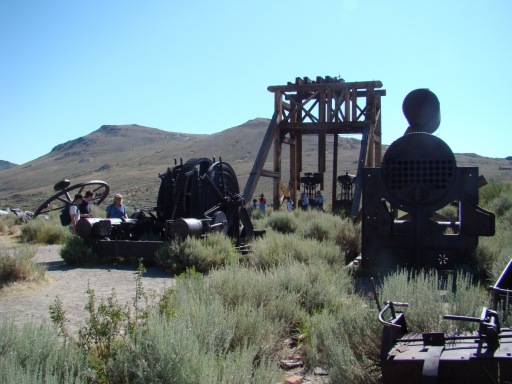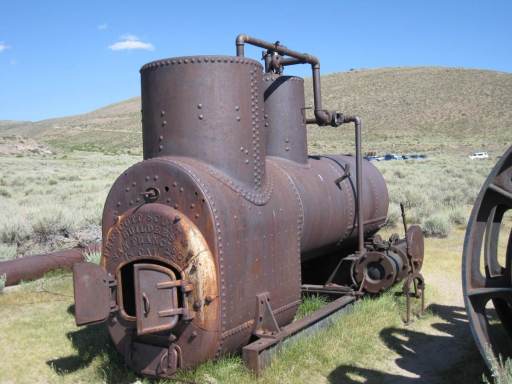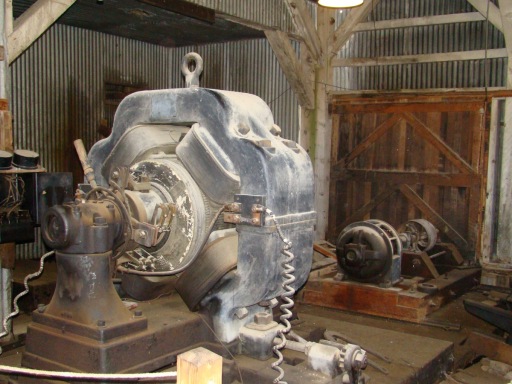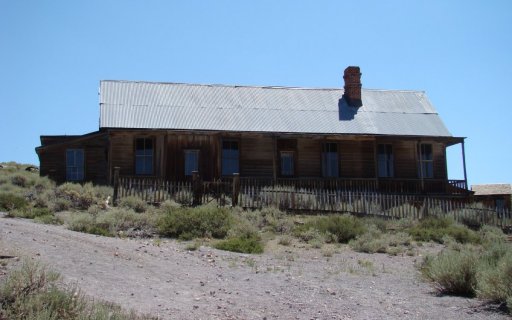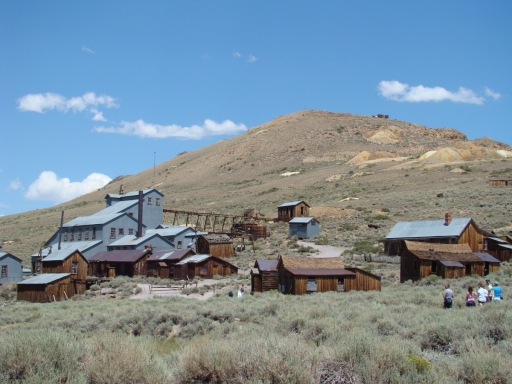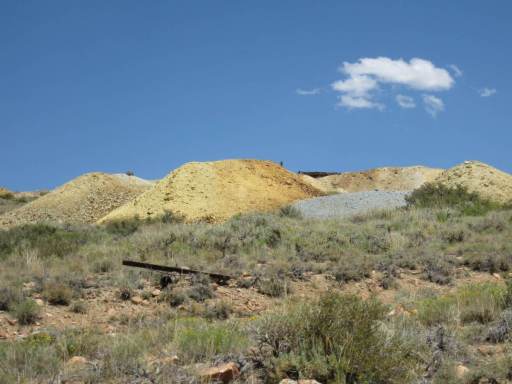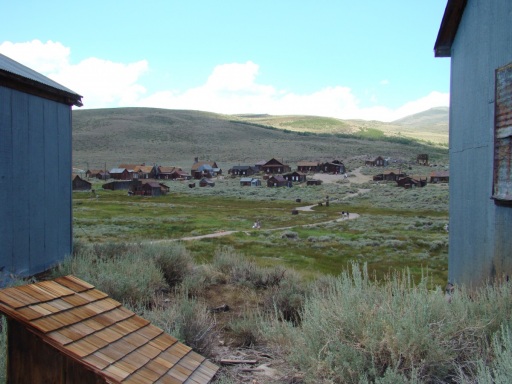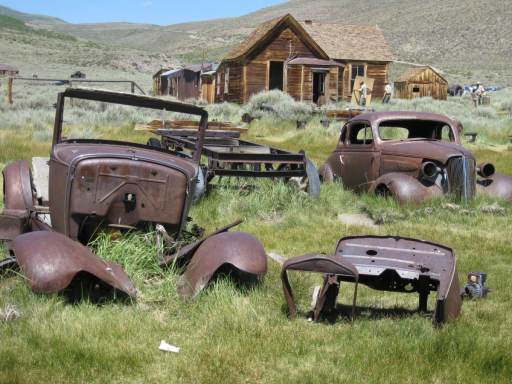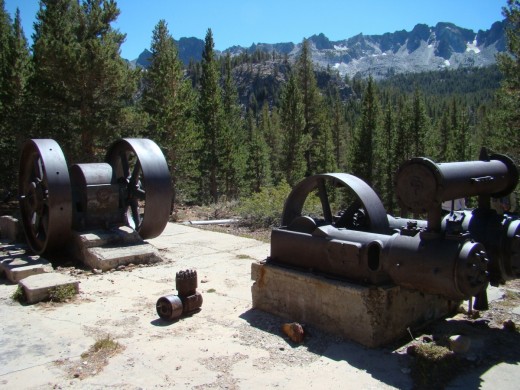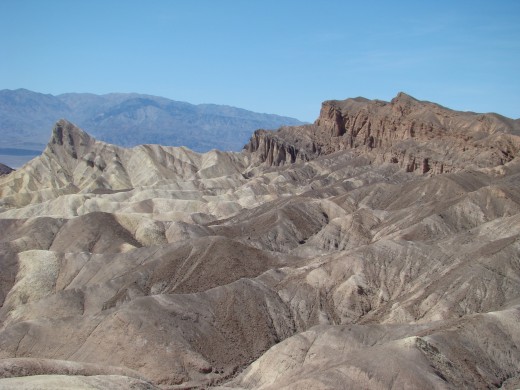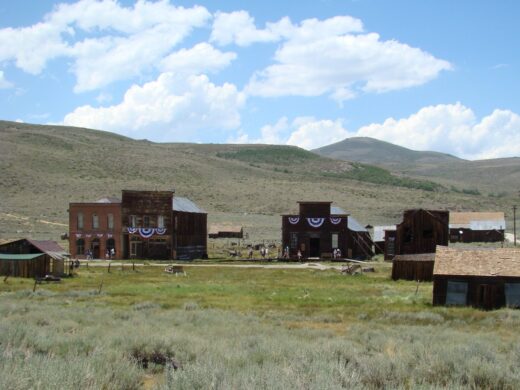Bodie Gold Mines and Mill
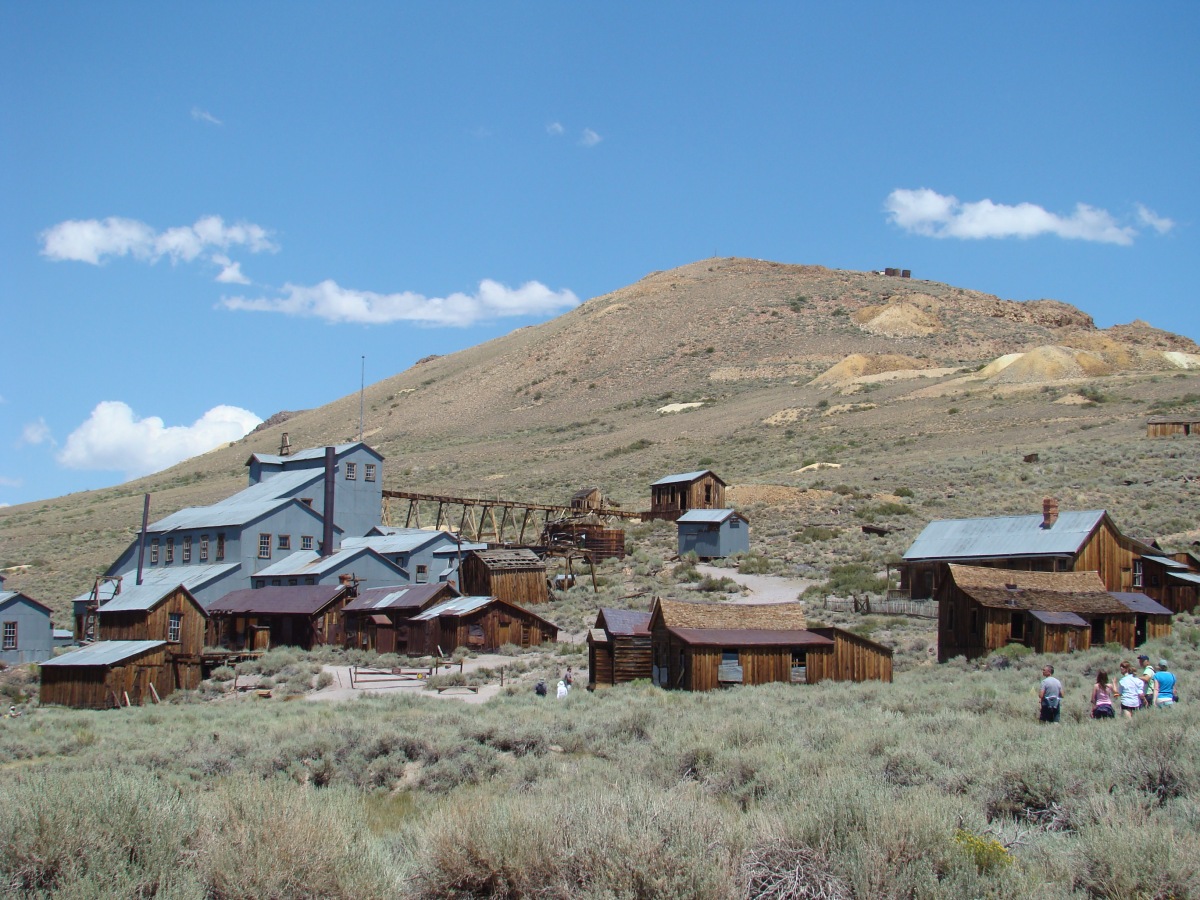
Northeast of Yosemite National Park in a remote valley at an elevation of 8,375 feet is the historic gold mining town of Bodie. The mines near Bodie were once the highest producing gold mines in the world. Though Bodie’s claim to fame was short lived gold was produced there for about 79 years. In early August of 2009 we explored what remains of this once thriving town. In a previous post I covered the town of Bodie and this post will be about the mining.
The history of the town of Bodie’s gold mining begins in the mid 1800’s with gold discoveries in the high desert of the Eastern Sierra which captured the attention of gold seekers. One of these was W. S. Bodie who in the summer of 1859 found placer gold on a hill just east of where the town is now located. He and one or two others filed a claim on their find and set up a mining camp. However W. S. Bodie perished in a blizzard that winter so he never saw his finding come to fruition.
Others continued mining for gold and a stamp mill for extracting gold was moved to from a nearby town to Bodie in 1865. Growth of the town was slow for a number of years and by the mid-1860s it only had around 50 residents. Then in 1875 a cave-in exposed a rich vein of ore which soon resulted in a flood of people coming to Bodie. By 1879 Bodie had a population of approximately 8,500 people and more than 2,000 buildings.
The first Standard Stamp Mill was built and began operating on June 20, 1877 but was destroyed by fire on October 5, 1898. It was quickly rebuilt and over the next 25 years yielded $15 million. Most of the stamp mill still stands today and is surrounded by outbuildings which include maintenance shops, assay office, shower house, smelter, and retort.
We took the Bodie Foundation daily public Stamp Mill Tour and our guide is the lady with the hat. This is one of the stamps that gives mills of this type their name. They were used to pulverize ore in order to expose particles of gold and make them available for recovery during subsequent steps in the milling process.
The Standard Stamp Mill had a number of levels and the ore was received on the top level so gravity could aid in moving the ore through the different stages of the process.
This mill had 4 banks of 5 stamps.
A number of methods were used on the output of the stamps to produce the slurry of water and fine particles of ore needed.
This slurry ran over amalgamation tables which had metal plates painted with mercury which caused the gold to stick to them. In the retort, which is essentially a mercury still, the vaporized mercury is recovered for reuse while the gold and silver are separated and cast into bullion bars.
The mines were generally vertical shafts with horizontal tunnels radiating from these shafts. The shafts averaged 600 to 800 feet deep with the deepest going down 1,200 feet. A headframe (also known as a hoist frame and is behind the machinery) was used to get miners in and out of the mines as well as to bring the ore out with a minimum of spilling.
The stamp mills were originally steam powered using wood for fuel and usually ran 24 hours a day. Since Bodie is above tree level and there are no trees nearby wood had to be brought in from some distance. In November of 1881 the railroad was connected to Bodie which greatly improved the delivery of wood.
In 1892 a hydroelectric power plant was constructed with a 13 mile transmission line connected to Bodie. The system used alternating current and was the world’s first application of this type. The Standard Stamp Mill’s steam engine was replaced with electric motors in milling and mining operations. However most of Bodie’s residents didn’t get electricity until the construction of power plant at another location in 1911.
This was the home of Theodore Hoover who was the manager of the Standard Mill. He and his wife Mildred lived there until around 1905 when he accepted a job elsewhere and they moved away. Theodore was brother Herbert Hoover who later became the 31st U.S. President. In the late 1800’s Herbert was working various mining jobs in the Sierra Nevada mountain range and occasionally visited Theodore at Bodie.
Bodie’s gold mining was at its peak around 1880. During that year over $3 million in gold bullion was shipped out of the town. There were over 30 mines operating in the area and nine stamp mills crushing the ore and using the mercury process.
In 1894 the cyanide process was brought to Bodie which is a similar process as mercury amalgamation but using cyanide for the extracting. The advantages of this process is it is less expensive and works well on low grade ore. The piles of tailings (left over material after the mill processed the ore) around Bodie were run through this process. A cyanide plant was built which started operating in September of 1894.
After 1881 the start of the decline of Bodie began. Over the next few years the ore was not as rich and becoming more difficult to mine so some mines started shutting down and people were leaving. By the end of 1884 only six or seven mines were operating in the area and the population of Bodie had shrunk to 1,500. The Standard Stamp Mill was shut down in 1913 by the Standard Consolidated Mining Company. J. S. Cain purchased Standard properties at Bodie. In 1915 he reopened the mine to leasers and put both the stamp mill and cyanide plant in operation. These operated intermittently until the onset of World War II when when the federal government prohibited mining not directly aiding the war effort.
After the war the mill was not restarted. Few people lived in Bodie year round though some still owned houses there and returned for the summer. Many outsiders were under the impression Bodie was completely abandoned so caretakers were hired to live there to prevent looting. In 1962 the town was established as Bodie State Historic Park. Today, Bodie is preserved in a state of arrested decay which means repairs will be made to patch leaking roofs and shore up walls as the park personal are doing to the house in the background. However no restoration is done. Only 110 structures are still standing the rest lost to fires, torn down to use for other purposes or simply fell down to lack of repair. To help with the preservation of the town the Bodie Foundation was formed in 2008.
We enjoyed our step back into time during our visit and I have since learned a lot about Bodie to warrant another visit someday. If you do plan to visit be sure to check the current park hours and road conditions particularly since the last several miles into Bodie are unpaved. Also be sure to check out my other post Bodie Ghost Town.
More Information:
California Department of Parks and Recreation Bodie information
